
thegreenkeeper
-Just Me [In my 30s going on eternity] (A Random Rambling Wordy Nerd and an appreciator of all forms of artistic expression) Being Me- Art, Books, Fantasy, Folklore, Literature, and the Natural World are my Jam.
249 posts
Latest Posts by thegreenkeeper
reblog this if your blog is a safe space on april fools and won’t have any jumpers, screamers, or anything scary or anxiety inducing
💙🦄💙
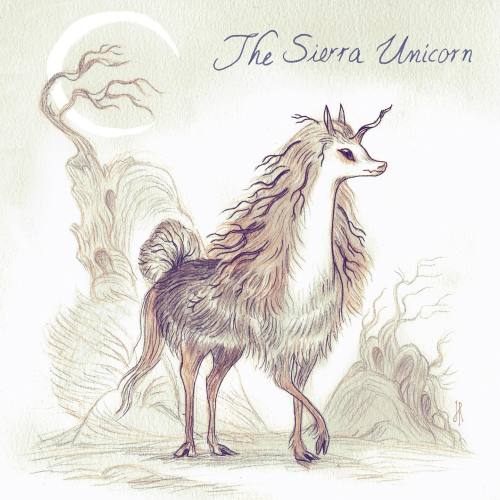

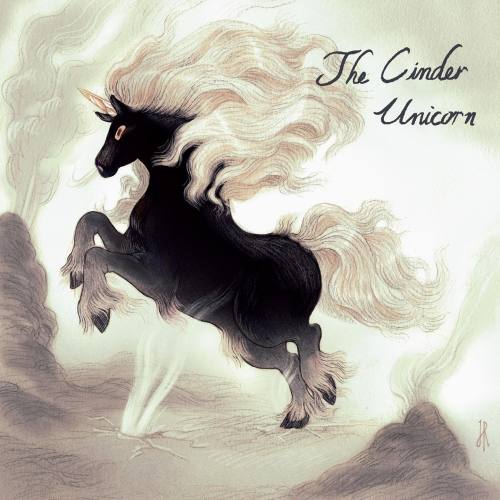

Art by Jo Rioux




hp aesthetic → hogwarts houses
“Bold Gryffindor from wild moor, Fair Ravlenclaw from glen, Sweet Hufflepuff from valley broad, Shrewd Slytherin from fen.”
😍 Love this. I believe I remember seeing another example of this artists work in a contemporary art history class in college. Or was it in a Hi-Fructose magazine? 🤷
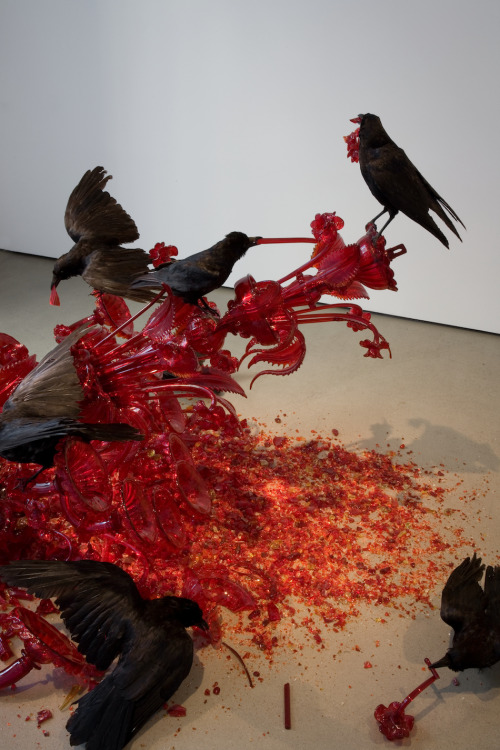
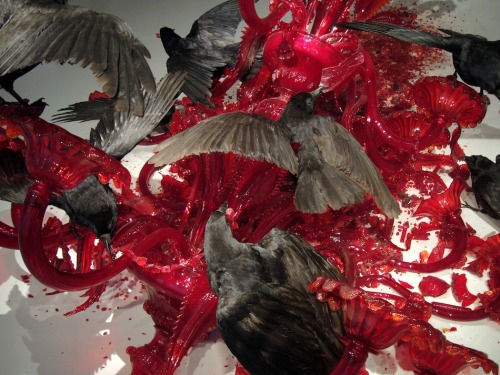
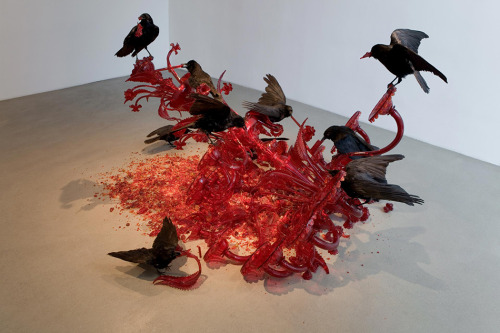

love this piece by Javier Pérez titled ‘Carroña’. Ten stuffed crows carefully placed on a shattered red chandelier to look as if they were feasting on a dead animal.
That is amazing. Bowie was a character but a humble one at that, and he had some class.

Fun facts about the animal symbols behind the seven deadly sins.
The animals of the seven vices
I just wanted to talk a bit about how the seven deadly sins, or seven capital vices, were always associated with animals as symbols (which is quite ironic, given the vices are human in nature). In fact, it is quite funny to see that originally the idea of representing the vices as animals was done as an anthropomorphization. The animals were humanized and designed as a reflection of the sinful humans or the social categories most afflicted by this sin (it was quite common in early Middle-Ages: take La Chanson de Renard, the song of Reynard, this very famous fiction in which animals are used to parody the medieval society). It was only later, as time passed, that the animals came to be considered as the embodiment of sin, not a reflection or symbol of it, and as a result the representations stopped humanizing the animals and started doing the reverse, animalizing the humans as a way to represent sin overtaking them.
Another fun fact to mention - originally the “animals of sin” were quite exotic creatures, like the lion or the whale, because the classification of sins and the whole origin of monotheistic (especially in this case Christian) religions come from “exotic country” like Greece, Turkey, Palestine, the Middle-East. But in the Middle-Ages it was difficult for the priests and churchmembers to make the common folk of Western Europe understand what those animals represented, since they had never seen them. And so they switched with animals much more common in France, England, Germany, be it animals of the wild, like foxes and bears, or city and farm animals, like dogs and goats.
For Pride, the traditional animal nowadays is considered to be the peacock, which was indeed a typical representation of this sin. The peacock, with its beautiful tail and colors, was considered to be an allegory for how prideful people covered themselves in jewels and precious clothes - but the bird cannot hide its “ugly legs” the same way the prideful beauty is only skin-deep. However, as you can note, the peacock truly represents pride in a sense of vanity, and indeed was only used for the pride when the vice of “vanagloria” (vain glory) was fused with the one of superbia (pride).
Before the peacock were the lion and the horse, two animals representing pride in its original sense of arrogance. The horse was the animal that the knights, lords and kings rode, a beast of the upper class, yet you could also fall from the horse’s back or the horse could throw you down, just like the prideful often falls. As for the lion, it was considered to be the “king” and “nobility” of the animals (in La Chanson de Renard, the king is parodied as Noble the Lion), but also a wild, dangerous and ferocious creature (and thus evil).
For Greed, nowadays most people will tell you that the typical animal associated with this vice is the toad. I cannot deny that there is indeed a strong link between this animal and the idea of greed (the first Christian animal allegories of greed include toad), and in general of wealth (in China, they have frog statues that, when you put a coin in their mouth, give you prosperity and money in the future), but the exact reason why is unknown to me at the moment. Some people say the toad was considered a “greedy” creature because it wanted to live both on land and water, unable to just choose one part of the universe like all the other animals. I do not know if this explanation has true cultural basis.
Usually, greed was also represented by several other animals in medieval imagery. On one side, you had the wild ravenous animals: the wolf, seen as a greedy devouring beast, or the fox, which often raided the farms to “steal” the chickens and young animals away (and the fox was always perceived in Middle-ages as a greedy thief). On the other, you had smaller creatures, like the mole (due to living underground and constantly digging the earth, it was a reflection of Greed’s materialism) or the badger. More surprisingly - the monkey or the ape was seen as the animal of greed. Why, you might ask? Because when the bourgeoisie appeared in medieval society, they wanted to flaunt their wealth all the way they could, and one of them was to buy a monkey and show it to all your friends and clients. As a result, the monkey became the symbol of the greedy bourgeois and materialistic merchants that wanted to show off and flaunt their wealth - and the animal of the vice of Greed.
For Lust, nowadays people will tell you the animal is either the cow or the goat.
The cow was not the most widespread representation of lust in the Middle-Ages, in fact it seems more of a modern interpretation. Some point out how the cow was seen by ancient civilizations as associated with love, beauty and sexuality - and it could have been a joke on how the social category of Lust (the same way Pride was kings and noblemen, and Greed bourgeois and merchants) was the one of the “lady” and “noblewomen”, the upper class women (who would be the center of love stories and romances in legends, and often cheat with their husband when they are away at war or for political reasons).
The goat was much more traditional than the cow. The goat (be it the female goat or male goat) was perceived as a symbol of an excessive and aggressive sexual strength, which can only lead to a brutal copulation or a frustration of the desires.
The sow was also often considered to be the animal of lust - where the male pig represents gluttony, the female pig is the other excess of the flesh, a symbol of lasciviousness. But more importantly - the snake was the symbol of lust. The snake which seduced Eve in the garden of Eden to bite into the apple, the snake with its phallic shape, the snake that some theologians considered had sex with Eve and thus eating the apple was but a metaphor for Eve cheating on Adam with the embodiment of temptation and evil.
Nowadays people say that the animal representing Wrath is a bear - pointing out how mother bears are very violent and aggressive when it comes to protecting their young. I have to say that this is however a modern interpretation. It is true that the bear was seen as a being of violence and brutality - but not so much a “wrathful” beast. It was rather considered to be a gluttonous and lustful being. It is true that many wild and aggressive animals were considered symbols of wrath: the leopard, the wolf, the lion… The king of them being the dragon, the physical embodiment of the wildness, dangerousness and destructiveness of nature, the chaotic fires and claws of evil.
But the traditional animal of Wrath was actually the boar. Aggressive and attacking all those around him, charging blindly - just like the wrathful are blinded by rage. It even reflected how wrath was perceived as the vice of suicide: indeed the hunters often used the blind and violent attacks of the boar against him, he went so fast and so blindly he would end up impaled on their sword, the same way the suicidal are blinded by their desire for self-destruction and run towards the “sword”.
The hedgehog also had a role as a symbol of wrath - since he was covered in spikes, he was seen as a reflection of how the wrathful becomes untouchable and drives everyone away by covering themselves in “spikes” harming anyone trying to get close.
Envy’s animal was always considered to be the dog (especially the greyhound). It was due to the idea that the dogs kept fighting between each other for food - and the specific picture of dogs fighting over a bone. A dog unable to stand another one of his species having a bone (literaly something with no meat and thus seen as useless) and trying to steal it away - this was perceived as pure envy.
Other animals close to the dog were perceivd as the embodiment of envy - like the wolf or the fox, wilder cousins of the dog. Envy also had a strong connection to reptilians - be it the snake (that according to some used envy and jealousy to make Eve eat the forbidden fruit), a dragon or a basilisk (that poisons everything around it).
Gluttony’s symbol stayed the same since the ancient times: the pig. An omnivore being perceived as the embodiment of over-eating, who visibly enjoyed a lot the act of eating and wallowed in the mud and his own filfth… That was how the excessive and wasteful gluttons were perceived.
Other animals were also considered symbols of gluttony. The wolf was seen as a hungry devourer (hence why in fairytales he keeps trying to eat everyone), and the bear was also considered to be an embodiment of gluttony and lack of temperance (due to how crazy bears are about honey and how much they can eat - again, in La Chanson de Renard, the character of the bear gets tricked by the protagonist due to his gluttony).
And finally we reach Sloth, or Acedia.
Nowadays people tend to say that the goat or the sloth are the “sloth animals”. The goat, yes, it was perceived as a symbol of laziness (some pretend that this is due to the “scapegoat” which is the easiest and laziest way to get rid of a problem by accusing instead of searching the truth, and while this interpretation is valid, it is probably not the true explanation since the scapegoats weren’t perceived like that in Middle-ages, but anyway). But the sloth was too recently discovered to be a symbol of sloth in traditional art. Of course it is connected to the vice (after all it was NAMED Sloth), but it is not a traditional symbol of it.
The traditional symbol of Sloth (and Acedia, the two being separate yet later fused together) is actually the donkey. Of course many people understand why the donkey is sloth in a pragmatic term - it is said to be a lazy, stubborn beast that you have to force to work. Those more educated will know that the donkey was also seen as the animal unable to choose and incapable of making adecision - there is this story of how a donkey ended up dying of thirst and hunger because it could not decide whether to go right to drink or go left to eat. But what few people know is the religious meaning of the donkey.
You see, the donkey is known to eat thistle. And the thistle, beautiful but that pricks those that take it, is a representation of the temptation of sin. As a result the donkey eating thistle was a symbol for people simply taking the easy way and falling for the temptation of sin (the stuff on the ground that pricks) instead of making an efffort and reaching for the virtue (such as the fruits hanging from the branches of trees).
In modern days, people tend to use snails as a new symbol for sloth.
This was amazing; what a great storyteller.
I was raised agnostic and tend to remain ambiguous on theological matters.
-but my house has a porch on the second story that affords me a terrific view of my neighborhood and the Colorado Front Range and I was partaking of some peace before the 4th Of July Finger-Loss Festivities begin, and I have had a
~*Spiritual Experience*~
I just watched my neighbor try to unload an actual wooden pallet that had to have been forklifted into the back of his insecurity pickup worth of fireworks.
Except that he does not have a forklift in his garage.
He does have so much sports memorabilia and cardboard boxes of unsold MLM Merchandise and patriotically themed camping gear and posters of women in bikinis and flags of suspect political organizations in his garage that there is only BARELY enough space for the fireworks and certainly none for his truck.
So he had to unload the individual boxes of recreational explosives from the back of his truck and stack them in the minimal space he had cleared by hand. This is a tedious and time-consuming process as this neighbor has purchased a wide variety of recreational and locally illegal explosives instead of many of just a few types, so the individual boxes are rather small.
He begins, and this is crucial to what happens next, by cutting apart the industrial-grade saran wrap his explosives dealer had so carefully wrapped his merchandise in, and discarded it unsecured on his lawn.
Where Outdoor Conditions sometimes happen.
His process for unloading the fireworks is to 1. Climb up through the gate into the bed of his pickup truck (a feat made unusually difficult due to the slope of his driveway, and this man's fascinating decision to wear the world's Siffest and least Flexible Denim Overalls. 2. Once in the pickup bed, he selects ONE (1) box from the pile He is apparently from a niche religious institution that doesn't believe in stacking things. 3. Carries it awkwardly around the palette that barely fits in the truck bed 4. His wife yells "Be careful!" when he nearly falls out of the pickup. 5. He Yells "SHADDUP!" back at her. 6. The Large German Shepherd barks from inside the house. 7. He yells "SHADDUP!" back at her too. 8. He sets the (1) box down on the gate 9. Slowly and awkwardly climbs out of the pickup bed 10. picks the box back up, and carries it into the garage.
Question: Aren't you going to help this poor man? Answer: Absolutely Not.
There's four military veterans, MANY dogs, and several people with dementia in this neighborhood, all of whom are terrified by this chicanery every year and many neighbors have repeatedly asked him to maybe do the fireworks somewhere else. (This is the Eighth Year Running he's held a major demolition event in his driveway, and for those of you who can do math, you may be able to guess the precipitating incident to this little ritual) Additionally, I live in Colorado, a state marginally less prone to spontaneous and catastrophic conflagrations than a rotting grain silo, but only marginally. Our recreational explosives laws are written accordingly.
I am in fact calling the Non Emergency line to report Fireworks violations, and reading off the brand labels to someone named Dorothy, who is gleefully totaling up a SPECTACULAR fine for my oblivious neighbor.
However, while I'm on the phone with Dorothy, I notice the wind begin to pick up. and by "Notice" I mean "The Industrial Saran Wrap he left on his Lawn earlier is suddenly swept up about 100 feet into the air by an updraft intense enough to make my ears pop" And by "Pick Up" I mean "I look up to see the sky has turned a fun and exciting shade of glass green, and the bottoms of the clouds are bumpy and rounded, and the overall effect is not unlike looking up through the bottom of the cup at God's Matcha Boba Tea."
For those of you who do not live in places with Inclement Weather, these conditions mean "You have about 30 seconds before a Major Meteorological Event Occurs."
I move under the eaves. "Hang on Dorothy." I say, nose filling with Petrichor. "The show is about to be cancelled." "Oh, that doesn't matter!" Dorothy cheerfully informs me. "It's illegal for him just to possess those, no matter if he actually gets to set them off or not." "Terrific, because he's gotten maybe five boxes out of a hundred inside."
Sometimes, the weather gods are Merciful and give you a verbal warning, typically in the kind of thunderclap that makes your ears ring.
The Gods were not merciful today.
It's not often that I am in the time, place, correct angle or in a properly observational frame of mind to see this, But I got to see it today. Huh. I thought. I've never seen a cloud just DIVE for the ground before. Oh. I realized as it got closer. That's RAIN.
Sometimes, a thunderstorm will form in such a way that the rain that would normally be distributed over an area of say, five to tent square miles, is instead concentrated into an area of say, my neighborhood exactly.
So today, I was granted the rare privilege of being able to actually see the literal wall of water descend from On High and DIRECTLY onto my porch, my street, and my neighbor's truck, and his pile of unwrapped fireworks.
The sheer impact force of the downpour immediately scatters the teetering pile of fireworks boxes in the back of the truck, like the wrath of God striking down the tower of Babel. Boxes tumble, then are washed out of the bed of the truck by the deluge. Smaller Boxes are carried down the road in a little line by the stream forming in the gutter, like little impotent explosive ducklings.
My neighbor was definitely yelling something, but I could not hear what over the DEAFENING noise several million gallons of water makes upon high-speed contact with the earth's surface, but there was a lot of arm-waving and faces turning red as he went looking for the saran wrap that had probably blown to Nebraska by now, while his wife started disassembling the complex three-dimensional puzzle of interlocking material goods in search of a tarp. They do not have a tarp. They have one of those wretched Thin Blue Line flags though, and my neighbor jogs out in a futile effort to cover what's left in the truck.
Which is when the hail begins.
"HELLO?" Yelled Dorothy. "HI!" I shouted. "WE'RE HAVING SOME WEATHER!" "OH GOOD!" she shouts back. "WE NEED THE MOISTURE!"
I watch for a minute longer, but the loss was immediate and catastrophic- the hail is the size of marbles and dense and cares not for your pitiful cardboard and cellophane, ripping the boxes asunder and punching holes in the few things covered in plastic. The colors on the Thin Blue Line Flag are seeping all over the remains of that it was supposed to protect in a particularly apt visual metaphor. Not even the few boxes that made it into the garage are spared, as the German Shepherd escapes from indoors, and in an attempt to assist her humans, jumps directly into the small stack of not-yet-ruined boxes, scattering them into the driveway and deluge. She even picks one up so her humans will chase her around the yard, before dropping it in the gutter to be swept away.
So. I was raised Agnostic -but even I can recognize when God slaps someone upside the head and shouts "NO!" at them.
---
(If you laughed, please consider supporting my Ko-fi or preordering my book of Strange Stories on Patreon)
![The Skeppsrå [Swedish Mythology]](https://64.media.tumblr.com/8fab09d1dac3fc78436b438a9b609b23/e2141fbb692d5ee7-5b/s500x750/2b4c7482c35ed3c8e68c80b32fc2a46ad347f997.jpg)
![The Skeppsrå [Swedish Mythology]](https://64.media.tumblr.com/1c3152c50fc6fc64407f0bb246655196/e2141fbb692d5ee7-17/s500x750/24231e306d5b24f418fd00e8c93436c1c90bfa7a.jpg)
The Skeppsrå [Swedish mythology]
In Swedish folklore, the term ‘Rå’ is used to refer to a specific class of spirits. These beings are each tied to one specific habitat or domain, which they rule and protect. There is the Bergrå, the spirit of the mountains, who inhabits tall mountaintops. The Skogsrå is the guardian spirit of the forest, the Sjörå rules over a lake or other body of water, etc. But not all of the Rå spirits are tied to a natural habitat: some have become the spirit of man-made locations or buildings. There are guardian ‘Rå’ spirits of churches, stables, mine tunnels, etc. And then there is the Skeppsrå: the ship spirit. These beings are usually depicted as small, bearded men, often dressed in a sailor’s outfit. Some depictions give them some supernatural characteristics, such as elf-like pointed ears.
True to their nature as protective spirits of a ship, a Skeppsrå warns the crew of a boat of storms, bad weather and disasters that will hit the ship. Each Skeppsrå is bound to one specific vessel. As the subject of folktales, they aren’t as common as their more powerful cousins which rule over a specific biome. As such, information about them is quite scarce. The most complete account that I could find is that of Johan Egerkrans in his book ‘Nordiska Väsen’, however this work was intended as entertainment rather than a historically accurate collection of old folktales, but he does cite his sources, which is more than I can say for most authors in that genre. In any case, he describes the creatures as follows:
The Skeppsrå, also sometimes called Skeppsnisse, maintains the woodwork of a ship, exterminating pests like woodworm and preventing the wood from rotting or deteriorating. It keeps the order on a boat and will therefore punish sailors and crewmembers who are drunk or careless. Still, having a Skeppsrå on board is an enormous boon.
A Skeppsrå does not choose an existing boat to inhabit, rather it will oversee the creation of a vessel while it is still in the shipyard. There is an old story that the Skeppsrå was originally a wood spirit bound to a tree. If a tree inhabited by such a being is chopped down and used as lumber to make a ship’s keel, the spirit will become a Skeppsrå and is usually bound to the ship for the rest of its existence. In rare cases, the lumber used to build a boat comes from two spirit-inhabited trees. When that happens, both of the spirits become Skeppsrå and will fight among themselves for the right to oversee the ship. If they are particularly violent spirit, their squabbles might even damage the boat. In one old folktale, two such spirits were careless and their argument was so loud that a sailor discovered them. The man questioned the two strange little men and patiently overheard their arguments. He resolved the argument by appointing one of the two spirits to become the ship’s Skeppsrå, and promised to build another vessel so that the other spirit could become the Skeppsrå of that ship.
Curiously, this last story is virtually identical to an old German myth about a similar spirit called a Klabautermann. When a child died unbaptized and a tree grew on top of its grave, the ghost of the infant would inhabit the tree. Sometimes, the lumber of such a tree would be used to build a ship, and the ghost would become a Klabautermann: a protective spirit bound to that ship. Much like the Skeppsrå, these beings would appear as small, bearded men. Thus, I believe that these two folktales differentiated from the same original story.
Sources: Klintberg, B. A., 2014, Svenska Folksägner, Norstedts, 529 pp. Egerkrans, J., 2013, Nordiska Väsen, B.Wahlströms, 126 pp. Lecouteux, C., 2016, Encyclopedia of Norse and Germanic Folklore, Mythology, and Magic. (image source 1: Johan Egerkrans, illustration for Nordiska Väsen) (image source 2: a Klabautermann, by Hetman80 on Deviantart)
https://www.instagram.com/reel/CqRSXNXpV7w/?igshid=NjZiM2M3MzIxNA==
Mmmhmm 😎🍪🎂🍰🍪
A ruddy wizard with a tragic past, what's not to love. I hope that when they make the Mighty Nein animated series, the design for Caleb looks similar to this; I love his nose.

my sweet sweet boy caleb
I would love to have a window like this in my house.
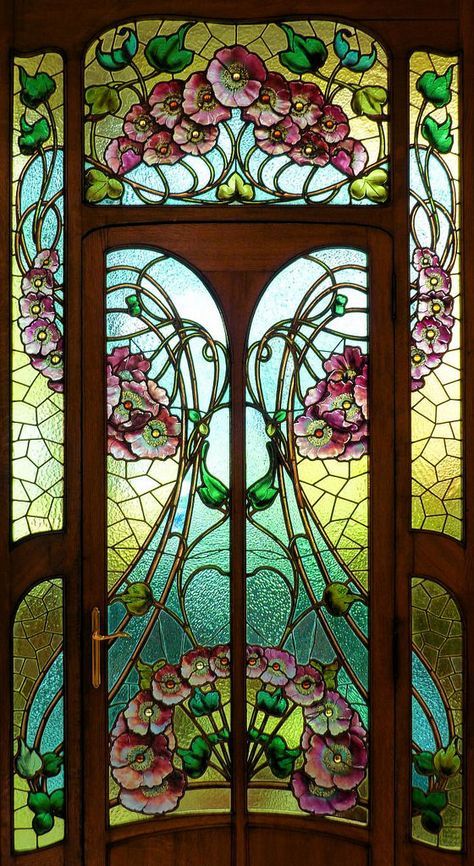
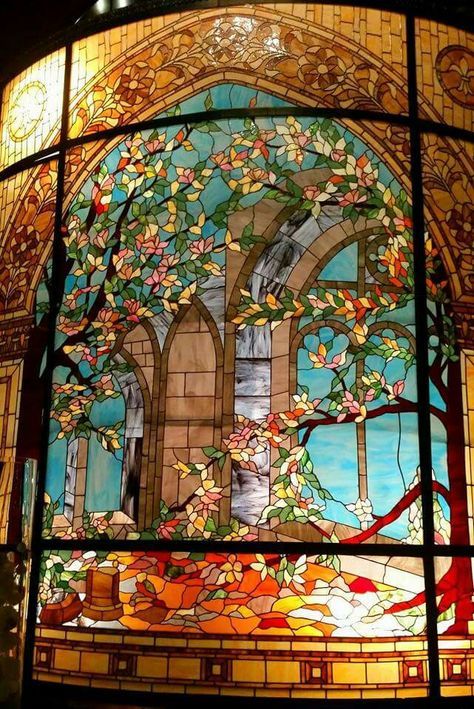
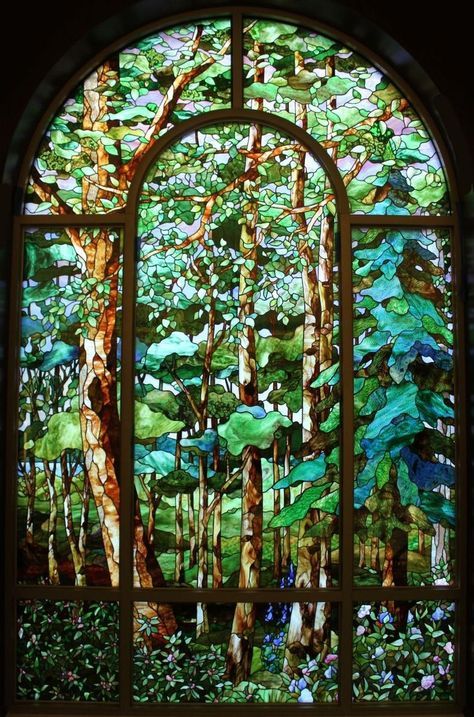
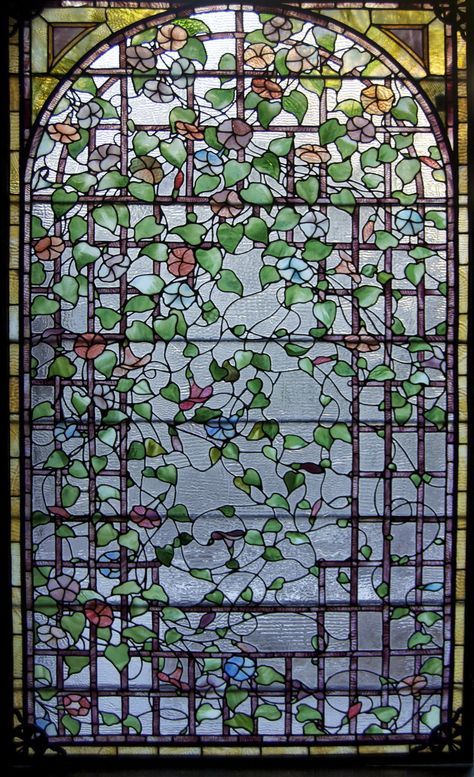

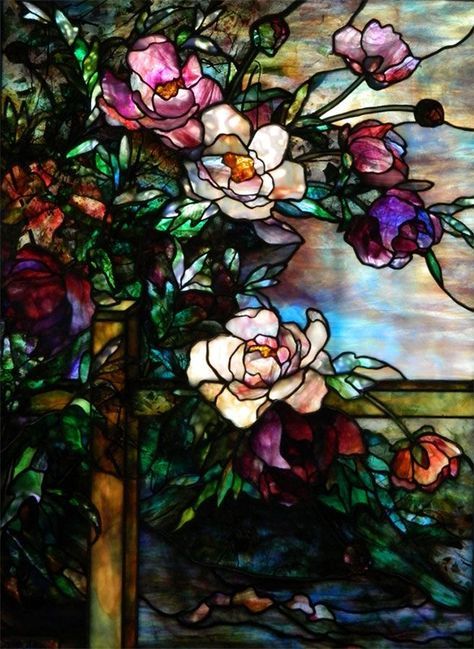
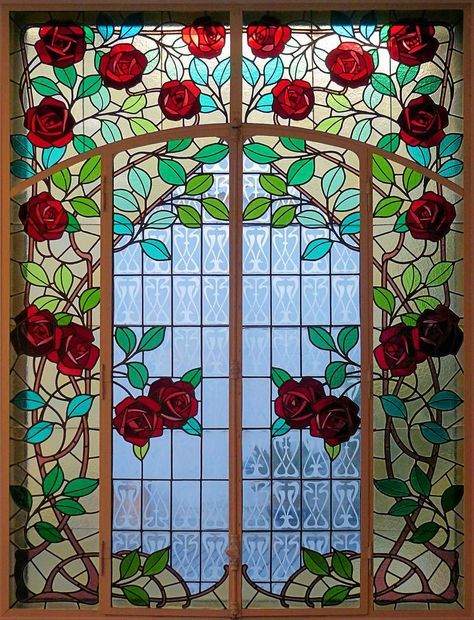
Magical stained glass
I love these stylized chickens. They're accurate but cute.










Little feathered dinosaurs by Ekaterina Boguslavskaya
This is so cool, imagine if you were playing a rogue. I can't think of a more fitting way to roll skill checks.
How does the lock dice work?
Sorry this took a minute to respond to, things have been nuts over here...
Okay! So, it’s actually a very simple design! The whole thing comes in two parts, like this:

On the left is the lock-shaped housing, on the right is the lockpick, which has all the numbers 1-20 arranged around the outer edge of the disc. The bottom of the lockpick disc comes to a point, like a spinning top, which is exactly what it is.

You thread the lock over the pick so the pick emerges from the keyhole in the lock, like this:

Now your lockpick die is all set. When it’s time to do a skill check, you hold the lock down with one hand for stability, and you twirl the lockpick with the other like a spinning top. After a moment, use your finger to nock the lockpick firmly down and reveal the result of your “roll”.
The window above the keyhole shows the number. In this case, I “rolled” an 18.
From behind, you can see the disc has teeth all around the edge, and there’s a point at the bottom of the lock that will catch between those teeth when you nock the pick to ensure it lands properly on one number instead of coming up between them.

And that’s how the lock-and-pick d20 works!
I'm already in the mood for Autumn, my favorite season of the year.



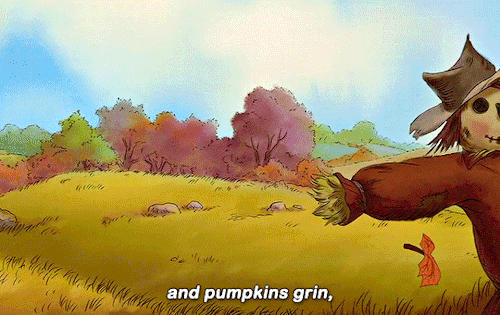


Pooh’s Heffalump Halloween Movie (2005) dir. Elliot M. Bour and Saul Andrew Blinkoff
Kori

Image © @a-book-of-creatures, accessed on A Book of Creatures here
[I have not read Folk Literature of the Cuiva Indians, the book that is used as a source here, so I don’t know how accurate this take is. But. Knowing that the Cuiba were traditionally semi-nomadic hunter gatherers, the story of a kori destroying a riverside village seems to me to have a bit of a “and here’s why we don’t make permanent settlements” vibe. Which makes it all the sadder that the Columbian government has forced them villages to become agriculturalists. Which makes them prey to missionaries, and the loss of their language and traditions, and the usual things that happen when small ethnic groups are put on reservations. So this is kind of a bittersweet last monster for South America, before moving onto another continent.]
Kori CR 12 NE Magical Beast This mighty creature resembles a shaggy, green furred anteater, larger than an elephant. Its tail is broad and has fins running along it.
A kori is a physical embodiment of erosion. They live in wide, shallow rivers, deltas or swamps, and constantly erode the riverbanks to expand the water’s edges. Using their powerful claws and hurricane breath, they knock down trees to create sunny, muddy patches, where they forage on their favored prey, freshwater clams and crabs. Unfortunately, kori also despise construction of any kind, and go out of their way to swamp boats, flood villages and destroy settled communities.
In combat, a kori usually opens by creating a vast expanse of sticky entangling mud. It can move through such hazards with ease and does so, slogging through to a single victim to tear them limb from limb before moving on. If it is feeling particularly sadistic, a kori will just use control water spells to raise the water level over the heads of mired victims, trapping them to drown. If multiple enemies are able to cluster together or are capable of flying over the mud pit, it blows them away with its hurricane breath, or slams them in unison with a single sweep of its mighty tail.
Areas where a kori dwells are difficult for permanent settlements to develop in, although it will typically ignore nomadic communities. Druids of a more destructive bent consider kori to be their allies, although the kori themselves are rather more ambivalent on the idea. Although kori are mighty combatants, they are relatively vulnerable to poison—it is thought that the arrow and blowgun toxins, ordeal poisons and other pharmacological tools of jungle people have developed in part to help keep these monsters at bay.
A kori is about forty feet long, and stands ten feet high at the shoulder.
Keep reading
Beautifully eerie and foreboding 🖤🤎













things i found while litter picking in the woods: an incomplete list
❤️

Fox, doe, ice bear by enimodas
😅🤣






I've been collecting these for a few weeks and I NEED MORE
🧚♀️🦄😍
I read this quote attributed to you, but I can’t find what book or story it’s from. It sounds like something you’d write, but nothing I can find listing it’s text-source has made me skeptical. Can you help me place it?
“It’s not that they’re small, the fair folk. Especially not the queen of them all, Mab of the flashing eyes and the slow smile with lips that can conjure your heart under the hills for a hundred years. It’s not that they’re small. It’s that we’re so far away.”
It's pretty obscure -- it was from a set of very short stories I wrote to accompany Dave McKean postage stamps in the UK. It was reprinted (or printed if you didn't have the Royal Mail Fantasy Stamps booklet) in the Neil Gaiman Reader.
Absolutely love this, just look at that face. 😍🥺

werewolf park ranger
she loves her job and helps keep the deer population under control
This is beautiful, love the action. Kind of gives me Watership Down vibes.

Title: The Hare and the Frogs Artist: Gustave Dore Date: 1868 Medium: Engraving Source: Wikiart.org
Yes, we have seen them. And we still think they are majestic, beautiful, quirky, and will most definitely tear you eyeballs out if you give them a reason to. 😁
everyone thinks ravens are these majestic, serious birds and…have you ever seen a raven






x
Is it October yet? 😉🎃
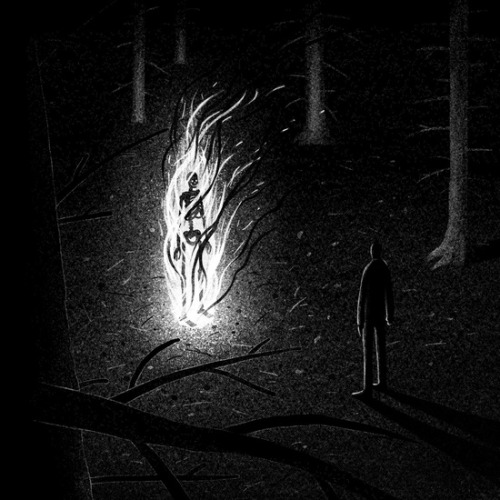
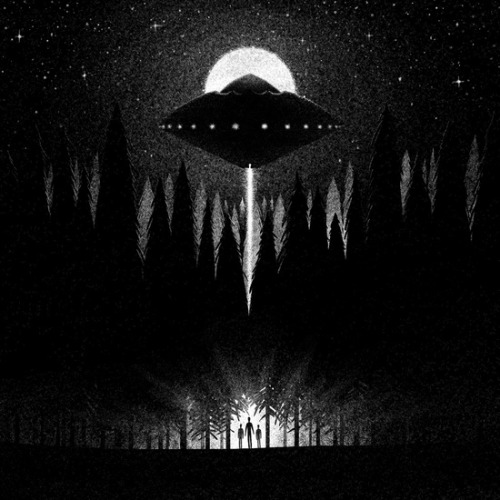
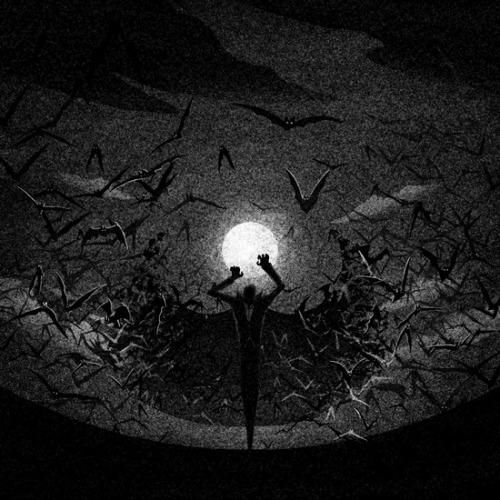
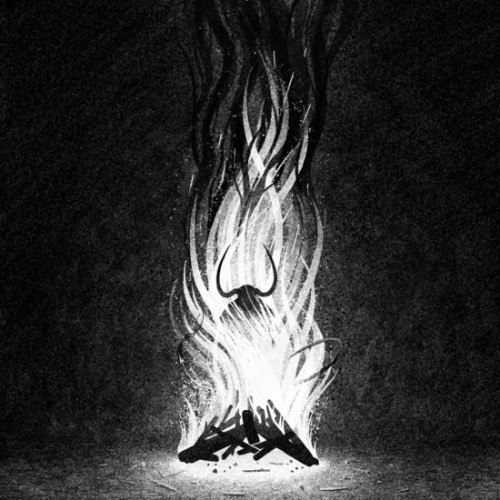
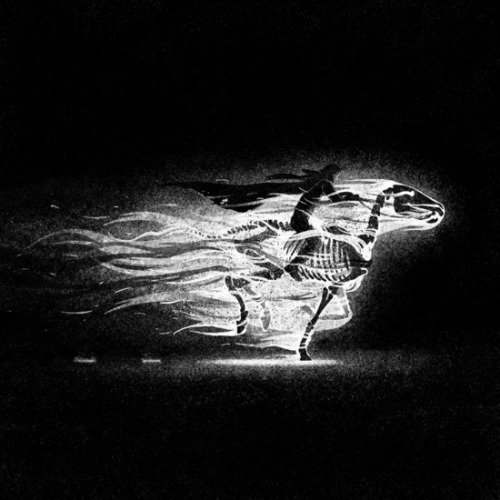
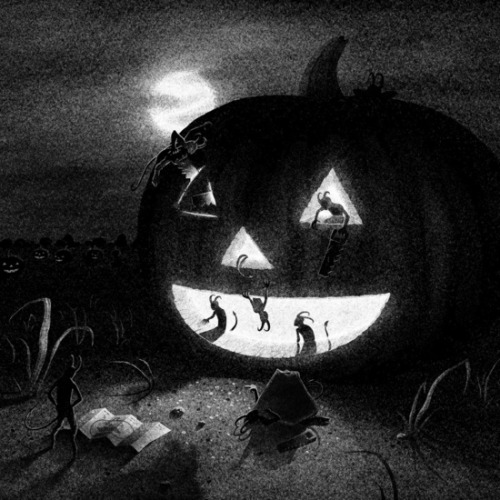
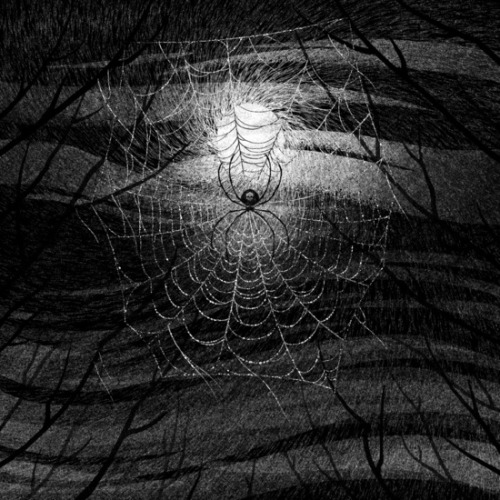
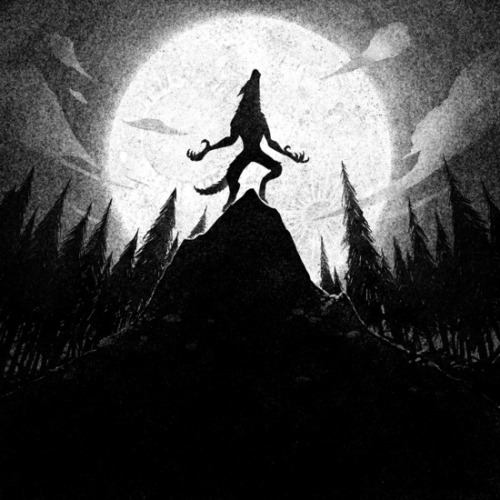
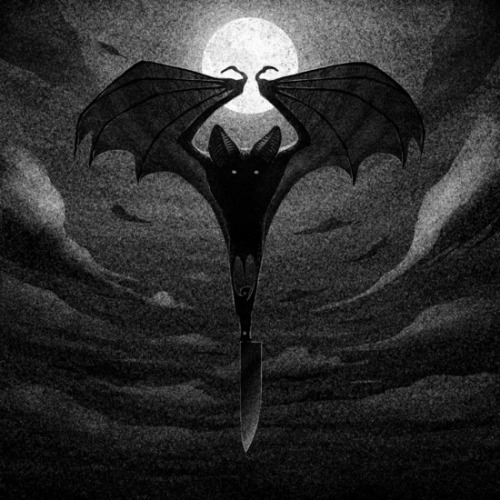
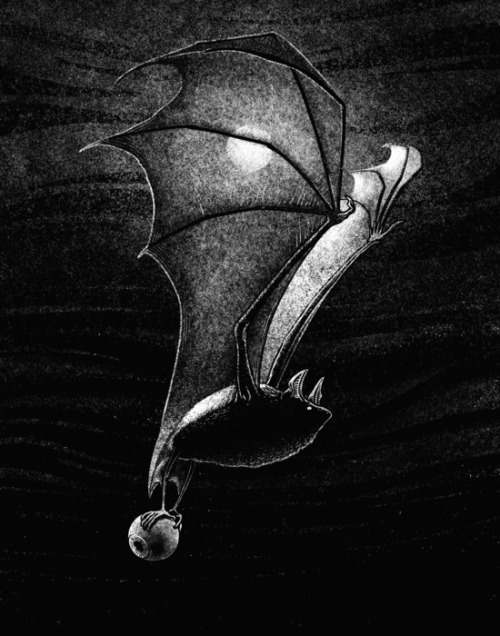

Simply fascinating 🧐👌

* * * * *
“Faith is not the clinging to a shrine but an endless pilgrimage of the heart. Our goal should be to live life in radical amazement, [to] get up in the morning and look at the world in a way that takes nothing for granted. Everything is phenomenal; everything is incredible; never treat life casually. To be spiritual is to be amazed. Prayer begins at the edge of emptiness. Wonder rather than doubt is the root of all knowledge. Just to be is a blessing. Just to live is holy. We can never sneer at the stars, mock the dawn, or scoff at the totality of being. Self-respect is the root of discipline: The sense of dignity grows with the ability to say no to oneself. The primary purpose of prayer is not to make requests. The primary purpose is to praise, to sing, to chant. Because the essence of prayer is a song, and man cannot live without a song. When I was young, I admired clever people. Now that I am old, I admire kind people. Know that every deed counts, that every word is power… Above all, remember that you must build your life as if it were a work of art.” ~ Rabbi Abraham Joshua Heschel
[h/t Ian Sanders]

* * * *
“Let someone dangerous in for tea. Make small signs that say “yes” and spread them all over your house. Become a friend of freedom and uncertainty…Take a lot of naps…Dream wild, imaginative dreams. Draw on walls. Read every day. Imagine you are enchanted. Giggle with children. Listen to old people…Be free. Praise yourself. Let go of fear. Play with everything. Preserve the child in you.”
- Joseph Beuys
[Guillaume Gris]
❤🧡💛💚💙💜

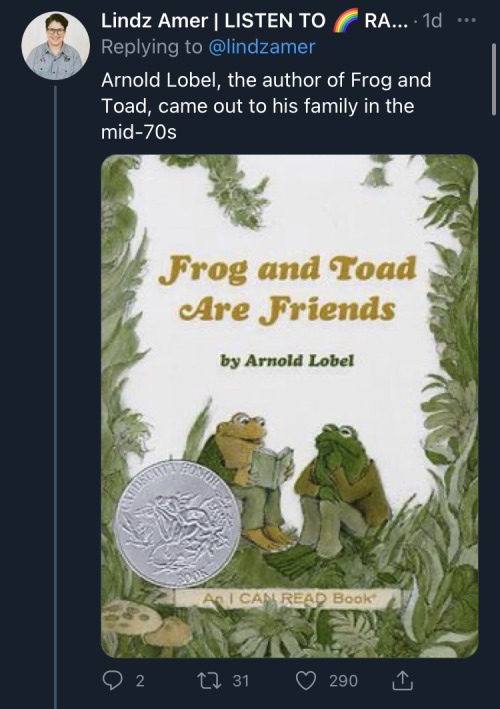


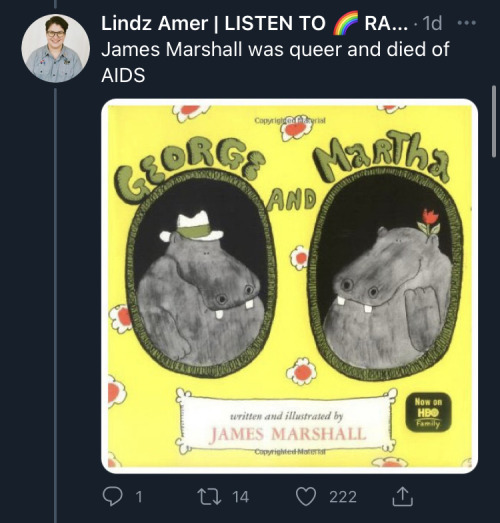
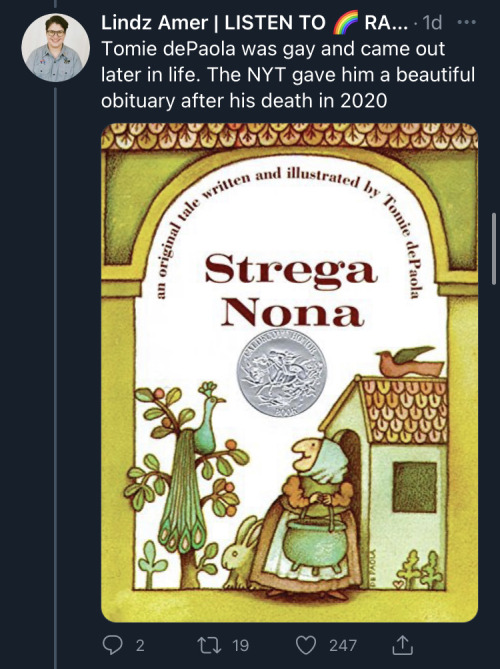

Edgar Allan Poe

Sylvia Playh

Neil Gaiman

Just a little lichen lad saying hello...
🌈Happy Pride
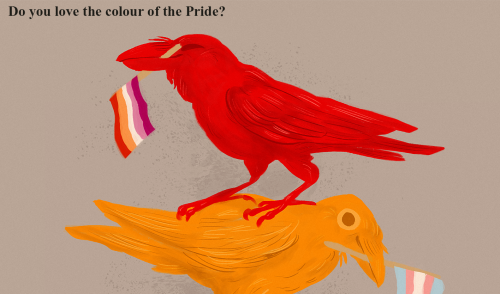

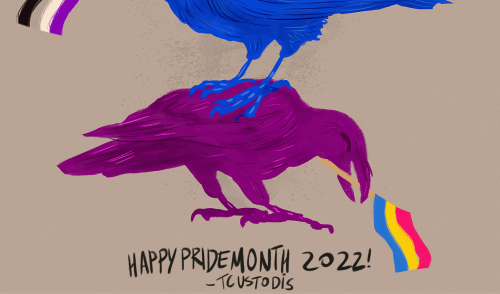
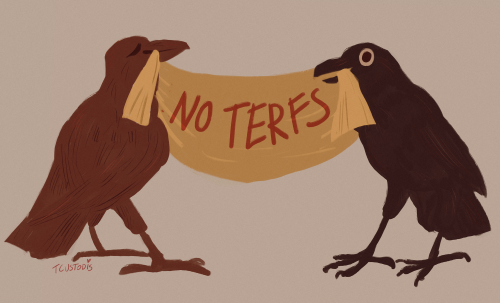
Happy Pride Month 2022!!!
Faust the Crow loves you even more than she did last year!